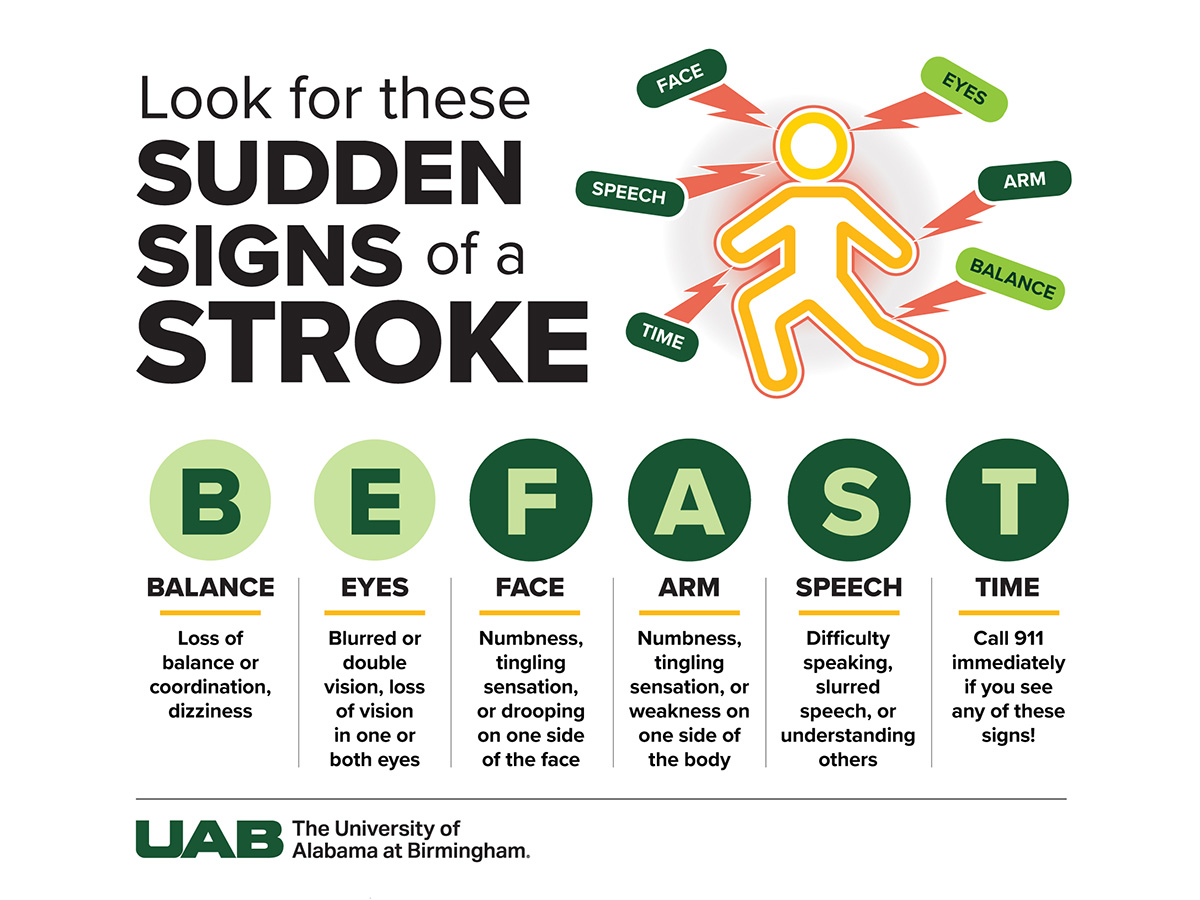
When a stroke goes unnoticed, it can have serious consequences later in life. According to the Centers for Disease Control and Prevention, around one-quarter of strokes in the United States occur in people who have had a prior stroke. Asymptomatic, or silent, strokes often require a brain scan to be detected.
Toby Gropen, M.D., a professor in the Department of Neurology at the University of Alabama at Birmingham, explains how to recognize the signs of stroke and how response time affects recovery.
“In a stroke emergency, every minute counts,” Gropen said. “Recognizing the signs of a stroke, and getting proper treatment quickly, can prevent long-term damage and improve overall outcomes.”
Immediate medical attention is the first step in treatment. Earlier intervention improves the likelihood of preserving brain function and reducing long-term disability. Some treatment options include clot-removal procedures, medications and rehabilitation.
What is a stroke?
A stroke happens when there is a sudden lack of blood flow to the brain. This causes brain cells to die and may lead to severe, rapid brain damage.
The effects of a stroke vary depending on size and which part of the brain is affected. The brain controls everything from movement to emotions, behavior and sensory functions. Damage in one area can lead to impairments in vision, speech, mood or personality.
Stroke risk factors
Gropen says understanding the causes of strokes is essential in practicing prevention.
Most strokes are associated with common risk factors, which fall into two categories: non-modifiable and modifiable. Non-modifiable risk factors include age, sex, family history, race and ethnicity. Modifiable factors, like physical inactivity, some medications or smoking, are addressed through lifestyle changes.
“While the overall risk increases with age, younger individuals are not immune,” Gropen said.
“Strokes in younger people can stem from less traditional causes, such as trauma, blood clotting disorders, heart abnormalities or even drug use. This can make diagnosis and prevention especially important in this age group.”
Signs and treatment
The common signs of stroke affect a person’s balance, eyes, face, arms and speech. These signs require timely action and are grouped into the acronym BE FAST:
- Balance: Loss of balance or coordination
- Eyes: Blurred or double vision
- Face: Facial drooping or numbness
- Arms: Tingling, numbness or weakness in one arm
- Speech: Slurred speech or difficulty understanding others
- Time: Act timely and calling 911
“Patients who receive treatment within the first few hours after symptom onset have significantly better outcomes, and those treated within the first hour often have the best outcomes,” Gropen said.
Learn more about treatment and prevention options through the UAB Comprehensive Stroke Center.